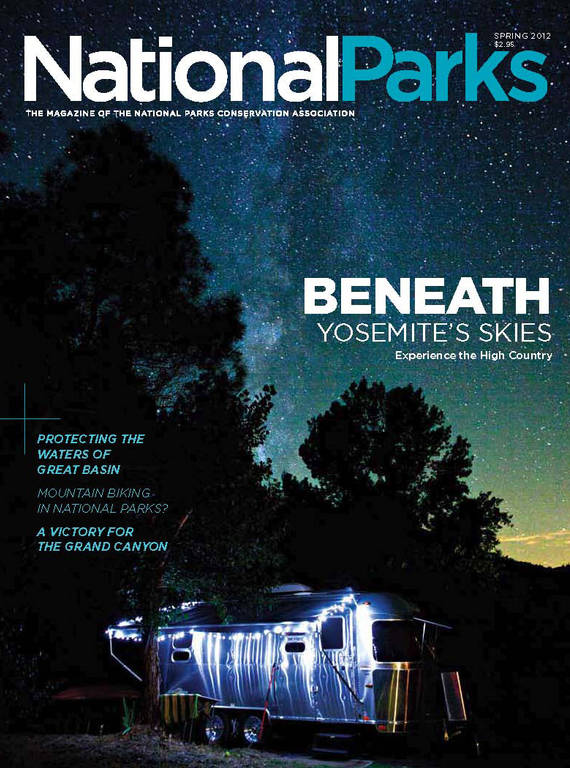Spring 2012
The End of a Radioactive Proposal
Department of Interior Prohibits Uranium Mines Near Grand Canyon.
After a five-year battle that included more twists and turns than the 1,450 miles of the Colorado River itself, park advocates have secured a 20-year moratorium on uranium mining on public lands adjacent to the Grand Canyon, removing a threat to the very waters that carved the canyon itself.
Back in 2006, uranium prices started to rise in response to increased demand from operators of nuclear reactors. As a result, thousands of new mining claims were filed within watersheds that drain directly into Grand Canyon National Park and the Colorado River. In 2007, a Canadian mine in Blanding, Utah, began to increase its production and started processing more uranium for nuclear reactors in South Korea and France. The U.S. Forest Service also started allowing mining companies to conduct exploratory drilling in the region without requiring an environmental assessment—a dangerous precedent.
For the next five years, NPCA and several other conservation groups worked to block any new uranium claims, to prevent the sort of contamination of land and water that had occurred at Church Rock, New Mexico, and the Grand Canyon’s Orphan Mine decades earlier.
Finally, in January, Secretary of the Interior Ken Salazar ordered a 20-year moratorium on thousands of new mining claims that could harm waters draining directly into Grand Canyon and the Colorado River.
“Going toe-to-toe with the mining industry was no small task,” says Taylor McKinnon, public lands campaigns director for the Center for Biological Diversity. “The industry has huge financial and lobbying might buoyed by an endless supply of lawyers, and we don’t. The resulting volume of work has been staggering—four lawsuits, 40 to 50 press releases, thousands of news stories, hundreds of conference calls, trips to Washington, dozens of action alerts, hundreds of thousands of public comments, congressional hearings, book-length comments on bottomless government documents… The good news is that with enough passion, persistence, and luck, victories sometimes come to those on the right side.”
“This really was a collaborative effort among many allies, most notably the Grand Canyon Trust and the Center for Biological Diversity, which took on real leadership roles beginning with some crucial court actions,” says David Nimkin, senior director of NPCA’s Southwest regional office. Nimkin himself testified before two congressional committees at hearings in the park, and NPCA’s Center for Park Resources produced a critical report that brought media attention to the issue. NPCA’s activist network also weighed in during the public outreach process, submitting 85,000 comments in support of the moratorium. When members of Congress tried to add riders to legislation that would have undercut the process at the last minute, NPCA’s government affairs staff and media team drew attention to the moves and put a stop to them.
Roger Clark, program manager for the Grand Canyon Trust, rallied local support. The former Grand Canyon river guide went before city councils and county governments asking for resolutions supporting the 20-year withdrawal and worked with the Havasupai tribe, which has been fighting uranium mining for decades. The Grand Canyon Trust hired independent economic consultants, who revealed flaws in a Bureau of Land Management analysis that had overstated the potential economic impact of the mine, which pales in comparison with tourism revenues.
And it all added up to a very sweet victory.
“When I was able to call Supai Village and talk to one of the Havasupai leaders and tell her that we had just gotten word of Secretary Salazar’s decision, there was silence on the phone—I could tell she was pausing to cry,” says Clark. “It was remarkable to work with people whose sole source of drinking water and whole reason for being was threatened by uranium mining.”
“I’m terribly excited about the announcement,” says Nimkin. “Uranium mining posed one of the more profound threats to the Grand Canyon—one of America’s most enduring landscapes—and the scale of degradation and industrialization that it would have brought to the park is just inconceivable. It’s inherent in the concept of a national park that this kind of activity simply shouldn’t be permitted.”

National Parks
You can read this and other stories about history, nature, culture, art, conservation, travel, science and more in National Parks magazine. Your tax-deductible membership donation of $25 or more entitles…
See more ›“Some people may not grasp the degree to which Grand Canyon defines our regional culture,” says McKinnon. “It’s central to the creation stories, histories, and identities of regional native cultures. It also sustains our communities—be they boatmen, restaurateurs, painters, photographers, authors, or scientists—so many people’s lives are tied to the canyon in one way or another. The withdrawal goes a long way toward protecting all of that—not just the iconic landscape and its biodiversity, which is critical, but also a vibrant and diverse regional culture whose well-being is inextricably linked to the canyon’s health.”
Mining interests are expected to appeal the decision, and conservation groups will need to continue their engagement, but for now the politics and legal wrangling have played out in favor of the canyon’s health.
“Every generation of Americans faces moments when we must choose between the pressures of the now and the protection of the timeless,” Interior Secretary Ken Salazar said as he announced the decision in January. “Today, we know that we can no longer afford to turn our backs on… iconic landscapes like the Grand Canyon. [This] is the right thing to do.”



